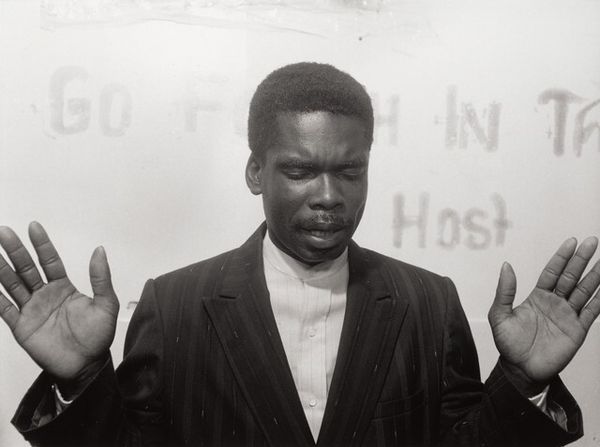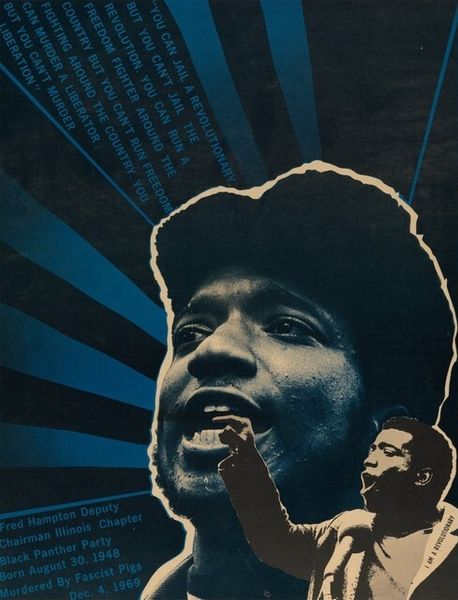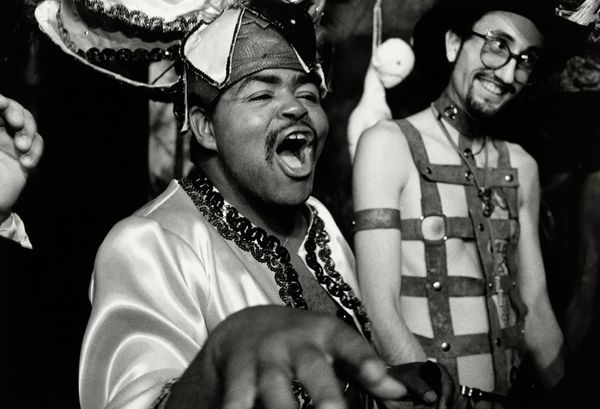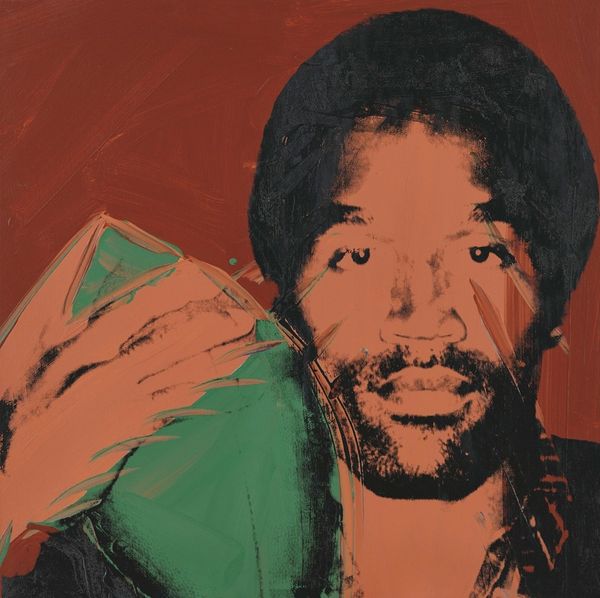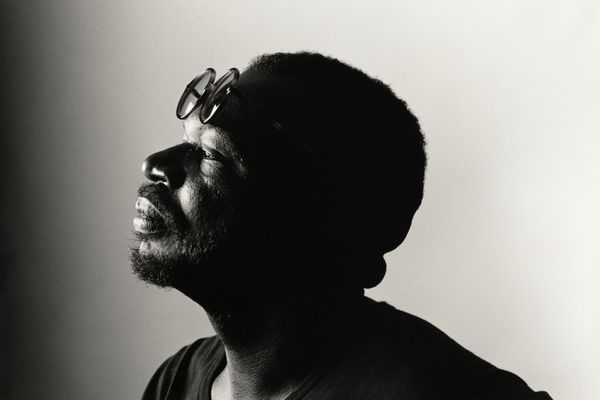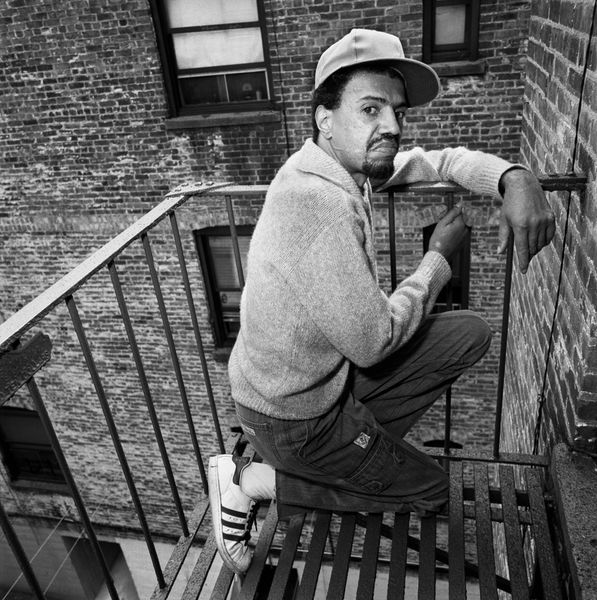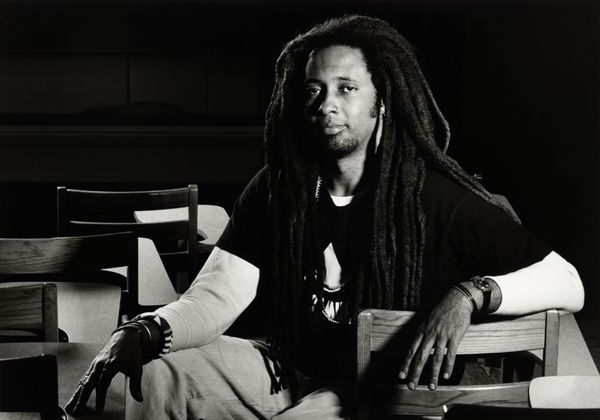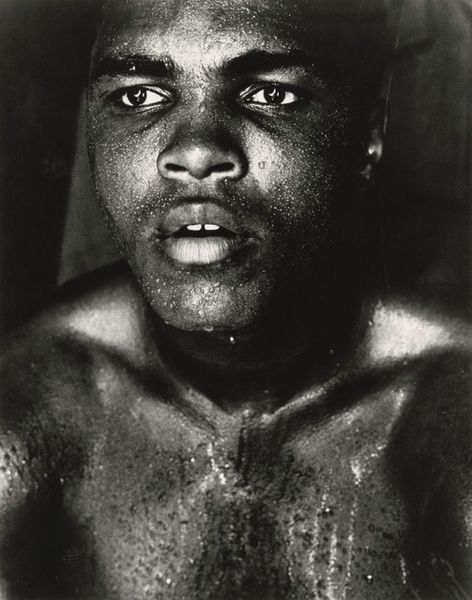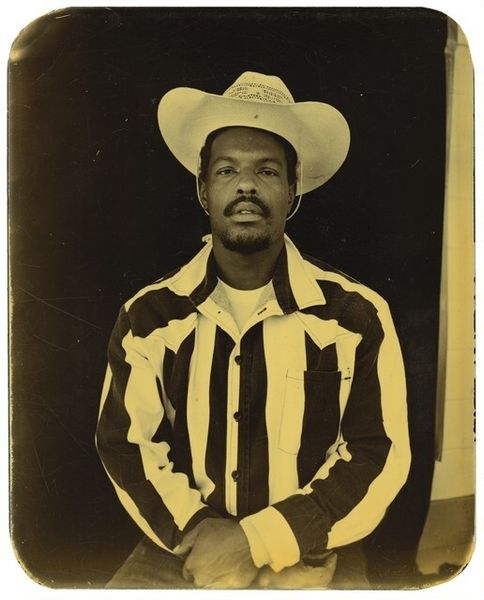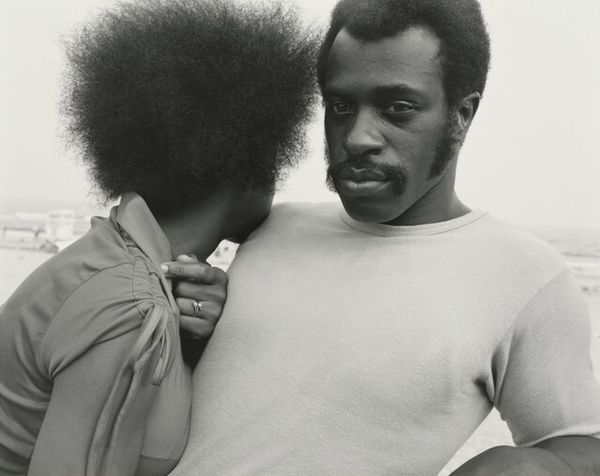
#
wedding photograph
#
black and white photography
#
club photography
#
live stage event photography
#
black and white format
#
historical photography
#
black and white theme
#
photo record
#
live stage photography
#
event photography
Dimensions: image: 26.5 × 34.5 cm (10 7/16 × 13 9/16 in.) sheet: 27.7 × 35.6 cm (10 7/8 × 14 in.)
Copyright: National Gallery of Art: CC0 1.0
Curator: What strikes me immediately is the clarity—the directness of the image. It's a black and white photograph, seemingly of a musician mid-performance, lost in his craft. The lighting creates strong contrasts, highlighting his hands and facial expression. Editor: That’s right. The work we’re observing is a black and white photograph by Darryl Cowherd entitled, “Imamu Baraka, Wall of Respect,” from 1967. What stands out is how Cowherd captured Amiri Baraka, who later changed his name to Imamu Baraka, an extremely important figure from the Black Arts Movement. It looks as though Cowherd caught Baraka during one of his many public performances. Curator: And think about the labor involved – not only Baraka’s performance, but also Cowherd’s meticulous work as a photographer, skillfully utilizing light and shadow, perhaps in a documentary capacity? Consider the film, the developing process…the darkroom. This wasn’t simply pointing and shooting. Editor: Absolutely. And Baraka's presence is compelling. The photograph becomes a statement about Black identity, about the power of performance and speech, at a time of immense social upheaval and struggle for civil rights. The angle and clarity gives Baraka this heroic sensibility. It's like the viewer is invited into a moment of intimate engagement with him, as he creates or orates, thus amplifying his role as not just an entertainer but as an activist. Curator: He is, quite literally, centered. Notice how Cowherd positions Baraka—it draws our focus immediately. Also note Baraka's clothing choices. It doesn't look particularly expensive. He clearly selected attire that signaled solidarity rather than flaunting any kind of wealth. Editor: His visible jewelry becomes more than just ornamentation. These deliberate adornments, along with his clothing, signal not only solidarity but perhaps adherence to pan-African philosophies as it coincided with his political ideology. His gaze directed upward signifies transcendence. It gives weight to any reading of him being a man tied to his socio-historical context; it is his intellectual labor on display as well. Curator: Precisely. Everything from the choice of the medium – black and white film – to Baraka's thoughtful dress seems to contribute to this narrative of collective uplift and defiance. These weren't random choices; they’re deliberately assembled, creating deeper meaning. It demonstrates a real economy of means—stripping away excess to distill something fundamental. Editor: And it reminds us of the radical possibilities inherent within accessible materials. Through Cowherd's eye, this becomes an artifact that memorializes an important movement and one of its intellectual figureheads during the Civil Rights Era. It transcends the status of a simple photograph and instead functions as historical document and testament. Curator: It's a striking work when you really consider the layered, often unseen work required. Editor: Indeed, a convergence of creative labor at a vital moment.
Comments
No comments
Be the first to comment and join the conversation on the ultimate creative platform.

